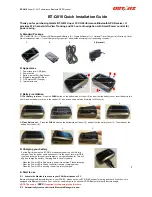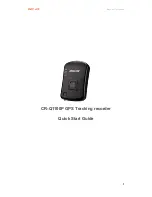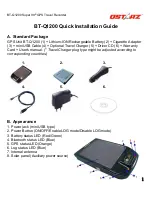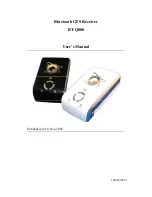
72
GPSMAP 2106/2110 Owner’s Manual
U
SING
S
ONAR
>
U
NDERSTANDING
S
ONAR
U
SING
S
ONAR
This section covers the additional options for the GPSMAP 2106/2110 when
used with a GSD 20, GSD 21, or GSD 22 Sounder Module. Read the installation
instructions included with your Garmin Sounder Module to install it
NOTE:
You must have a GSD 20, GSD 21, or GSD 22 Sounder Module
installed and connected to your GPSMAP 2106/2110 to use the sonar features.
Understanding Sonar
The transducer mounted on your vessel sends sound waves down into the water
in a cone shape, similar to a flashlight beam (covering a smaller circular area at
the top and angling out to a larger circular area at the bottom). These sound waves
reflect off of any object that they hit, and then the waves travel back up to the
transducer. These objects could be fish, branches, the bottom, or any other object
that has a density that is different from the water. The transducer receives the
sound wave information and then sends the information to the GSD 20, GSD 21,
or GSD 22 sounder module and then to the GPSMAP 2106/2110. The
GPSMAP 2106/2110 displays the information on the screen for you to see and
interpret. The type of transducer and the settings that you choose determine how
the information appears on the screen.
Using Dual Frequency
Dual frequency works best for deep water (off-shore) applications. The
200 kHz frequency allows you access to great detail about what is underneath
your boat. The 50 kHz frequency provides less detailed information, but
penetrates to greater depths with the same power. You can choose either or both
frequencies to get the information that you want. If you choose dual frequency,
the transducer alternates between the 50 kHz and 200 kHz signals. This capability
allows you to see the best picture available at any depth.
Using Dual Beam
Dual beam works best for shallow water (for example, inland) applications.
A dual beam transducer can transmit a narrow or a wide beam. The water area
covered by the transmitted sound waves is determined by the beam width of the
transducer and the water depth. The narrow beam provides crisp detail of what is
under your boat, and is very helpful if you are fishing in deeper water where the
beam covers more area (for example, at a 30-foot depth, the narrow beam covers
the area of about a 7-foot circle).
Wide
Beam
Narrow
Beam
The wide beam is more helpful in shallow water, because it gives you a much
wider view of objects in the water, including areas beyond the sides of your boat.
At a 30-foot depth, the wide beam covers the area of approximately a 20-foot
circle.















































